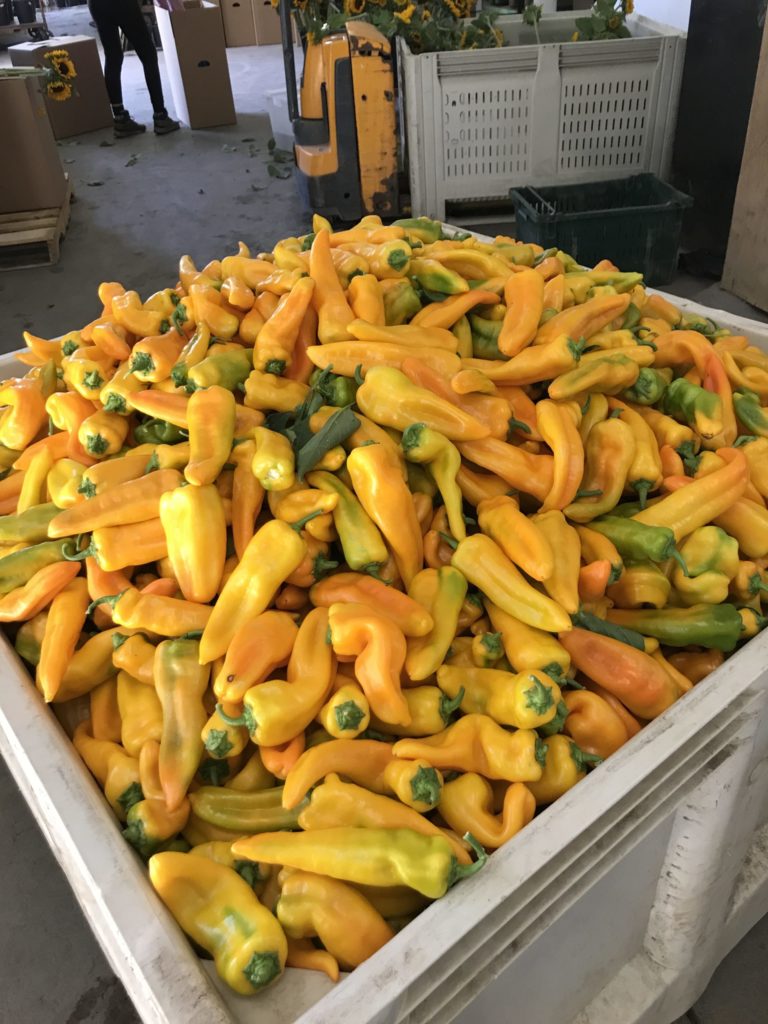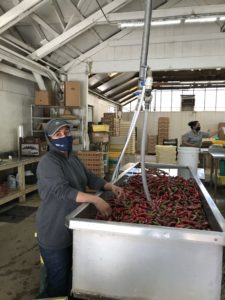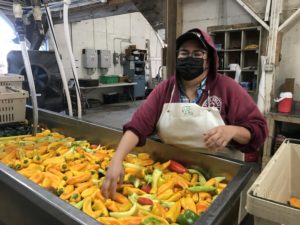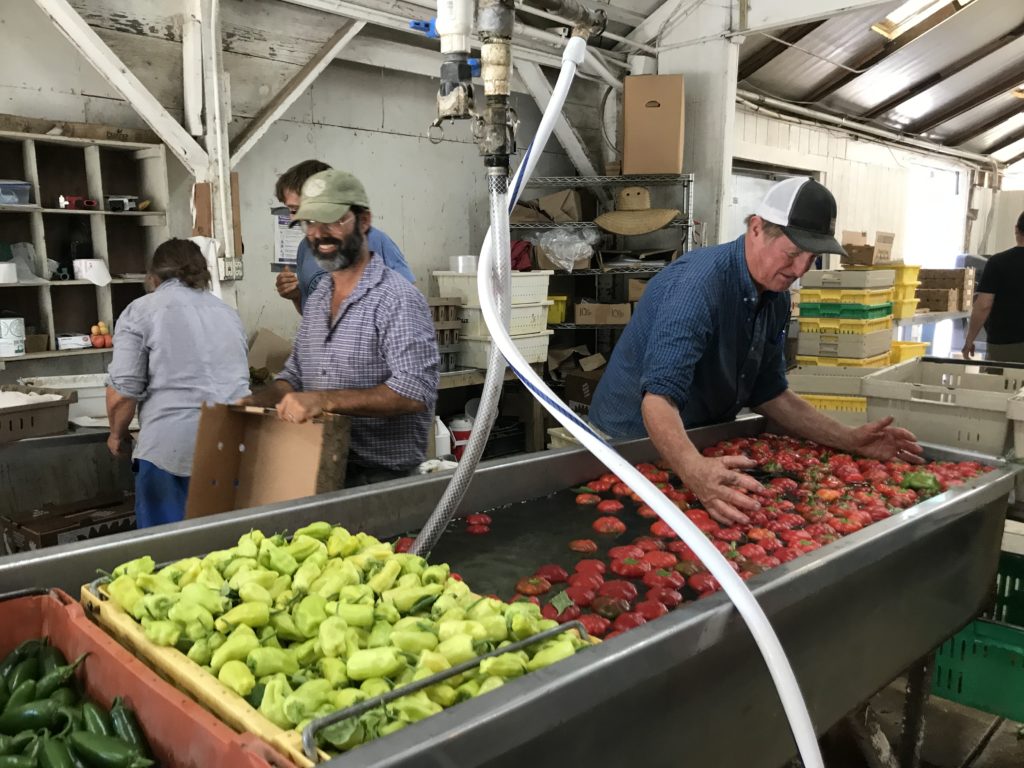
What do you do when you have a lot of hot peppers? If they’re hot because they’re spicy, we make hot sauce! If they’re hot in temperature, then we need to cool them down. The faster we can cool them down, the longer the shelf life and we want to get all of our peppers to our CSA members and other customers in the best condition possible.
Postharvest handling, meaning everything that happens from harvest up until sale, is one of the most important things we do. We can grow the best produce, nuts, and flowers, but if we aren’t thoughtful about what we do after harvest, then we’re undoing all of our hard work. For each crop, we need to consider the optimal temperature, humidity, and packaging/container, and other factors, given the infrastructure and equipment that we have. Postharvest handling has many components but temperature and controlling heat are huge.
During the summer, field heat (the difference in the temperature of the harvested crop and its optimal storage temperature) is exceptionally noticeable. I’ve spent some time recently helping sort and bag peppers and was able to feel the impressive amount of heat that radiates from a full bin of peppers just in from the field. The optimal pepper storage temperature is between 41 and 45 degrees. The shade cloth covering on the peppers protects them from full sunlight but not from the heat and when they come in from the field, they might be as hot as the air. Ideally we would pick all of our crops first thing in the morning when it’s cool, but there’re only so many hours in the day and lots to harvest, so we pick the most sensitive things (like basil) early and the heartier produce, like peppers, has to wait until later the day.

There are several options for cooling things down (this video or this webpage provide great overviews), but it comes down to water (in liquid or ice form) and/or air to cool things down. Some produce, like tomatoes, can’t get wet, so our only option is air. Other things like peppers can get wet, so we put them in a dunk tank or bin with chilled water. Even in seemingly cooler spring and winter days, we use water to remove field heat from crops, especially leafy greens, and to hydrate the crops to limit wilting. A few crops are packed up with ice if we’re sending them out to wholesale customers (corn, broccoli, some leafy greens).



Once we’ve removed the field heat and dropped the core temperature of the produce, then most items go into a cooler. There’s a whole field of science behind the proper treatment (especially temperature and humidity) for each crop. We don’t have the space to give each vegetable the exact optimal combination of conditions, but we do the best we can, utilizing several coolers, some wet and some dry, set to a variety of temperatures (38, 50, and 60 degrees). We pick to order and keep the time produce spends in our cooler to a minimum, but most things do spend at least a little time in the cooler.
Postharvest handling is a huge topic to cover, and cooling produce is just one part, albeit a huge one. If you want to learn more, UC Davis Postharvest Center has many great resources, including this video, which goes deeper into the science behind cooling and the various options that farms use. It’s cool stuff (pun intended). The goal in cooling is to get our produce to you in the best quality with the longest lifespan. It’s always something on our minds and it’s something you should think about too; how you store your produce influences how long it lasts and limits food waste. We often include storage information in the Beet and on our online produce pages (which we’re constantly updating), but if you have questions, ask, or try looking it up. You don’t have multiple refrigerators to utilize but can take advantage of different regions of your refrigerator, can control humidity levels utilizing different kinds of bags, and shouldn’t refrigerate certain things. Here is a simple chart from the UC Davis Postharvest Center that provides some basic guidelines. That being said, we all have our own preferences and may find something to quibble with – for example, I always store my peppers, cucumbers, and eggplants in the fridge, counter to the information on this sheet. If you have a favorite storage method to recommend, let us know!
– Elaine Swiedler, CSA Manager
